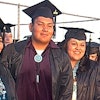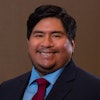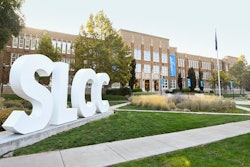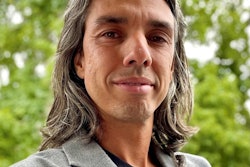Tribes Find Teaching Is Last Hope
For Saving Native Languages
TUCSON, Ariz.
As time treks through Indian country, the words of ancient songs and sacred rituals crumble under the weight of the nation’s dominant language.
“I hear more and more English on the reservation,” says Danny Lopez, who teaches Tohono O’odham at the community college in Sells, the capital of the Tohono O’odham Nation. “A lot of children don’t know our language anymore.”
But a language revival of sorts has sprung up among many American Indian tribes as they work to keep their mother tongues vibrant.
Just southwest of Tucson, in the San Xavier District of the Tohono O’odham Nation, children and their parents learn the language of their ancestors in special classes. In Nebraska, Ho-Chunk children absorb an elder’s words preserved in 1,500 audiotapes about life on the reservation. In Montana, mothers immerse their newborns and toddlers in a new language program.
These are some of the initiatives that were discussed in June at the University of Arizona, where 20 tribal members hoped to learn how to preserve declining indigenous languages. “Gathering Talk: Documenting, Describing and Revitalizing Our Languages” was the theme of the American Indian Language Development Institute this summer.
The residential program has offered training since 1979 to teachers of indigenous languages. But institute director Ofelia Zepeda says it is the first time tribal members have received a fellowship from the National Science Foundation to focus on language preservation.
The fellows represent languages from a number of American Indian tribes, including Akimel O’odham, Blackfeet, Cheyenne, Coushatta, Ho-Chunk, Laguna-Keres, Okanagan, Oneida, Sahaptin, Southern Ute and Tohono O’odham.
Zepeda and other linguists say the reasons for language loss are complex. But they note that American Indian languages historically were suppressed in government attempts to assimilate tribes into mainstream society.
In 1995, the Alaska Native Language Center found that of 175 indigenous languages still spoken in the United States, 155 were moribund because children no longer learned them.
“It’s a huge loss,” notes Zepeda, who is Tohono O’odham. “Young people are not learning their language, but that’s because the adults are not using it.”
Fellowship recipient Marvin Weatherwax, a member of the Blackfeet tribe in northwestern Montana, says the death of elders in the past two years has meant a drop in the number of fluent native speakers, from 500 to 350. Weatherwax, who teaches language at his reservation’s community college, says 18 new speakers were gained in the past five years.
Last summer, he says he determined by knocking on doors that 1,500 tribal members understand Blackfeet but rarely speak it. He calls them “sleepers,” and his goal is to reawaken their knowledge about the language so they can share it with youngsters.
“We can’t lose our language,” says Weatherwax. “Without it, you lose pretty much your identity; you lose pretty much everything.”
— Associated Press
© Copyright 2005 by DiverseEducation.com





















